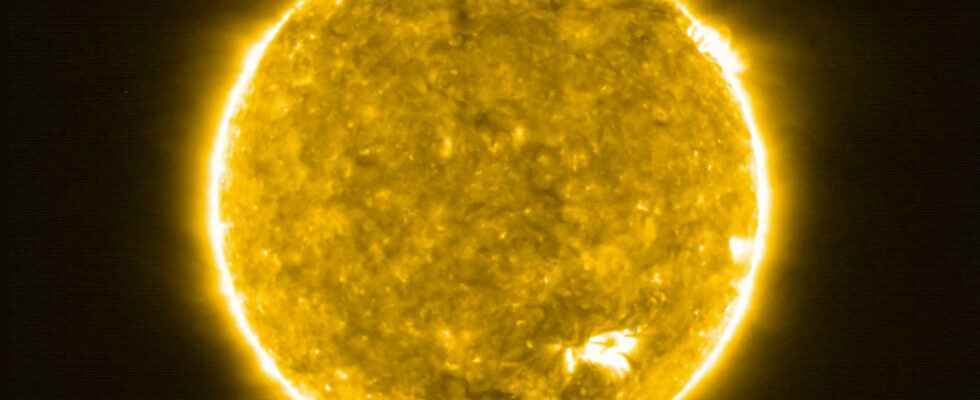The third flyby of Venus by the Solar Orbiter probe will be used for a trajectory correction. Objective: orient the mission in such a way as to give it better access to the poles of the Sun, regions which remain difficult to observe.
It’s a notable space meeting that takes place this weekend. On the night of September 4, 2022, at 3:26 a.m., the European Solar Orbiter mission will make its third flyby of Venus, the second planet in the Solar System closest to the Sun. This nearby passage will allow him to “recatapult” himself in the direction of the star.
This is Solar Orbiter’s third gravity assist around Venus (there was a fourth in late 2021, but that involved Earth). On this occasion, the machine will be at a relatively close distance: at its closest, its altitude will be “only” 6,420 kilometers from the Venusian surface. It will also be an opportunity to take a few more shots.
It is in October that Solar Orbiter will be in the vicinity of the Sun, although always remaining at a reasonable distance to limit the destructive effects of solar radiation – and this, despite the presence of a heat shield to protect its scientific instruments. and all on-board electronics.
Access the poles of the Sun
As part of the observation of the Sun, Solar Orbiter will take advantage of the Venus flyby to modify its trajectory. The goal? Have a stronger tilt to have better access to the polar regions of the star. The next passages of the probe between 2025 and 2030 must indeed emphasize these regions out of sight from Earth.
” Over the next five or six years, as we periodically approach the Sun every five or six months, we will gradually tilt our orbit to see the polar regions said Daniel Müller, scientist in the project. With each loop between Venus and the Sun, this tilt will be more and more pronounced.
The European Solar Orbiter probe is currently not the only one orbiting the star. Another mission, this time led by the American space agency, is also active around the star. The Parker probe, which crossed the atmosphere of the Sun at the end of 2021, must also approach its target at the beginning of September.
